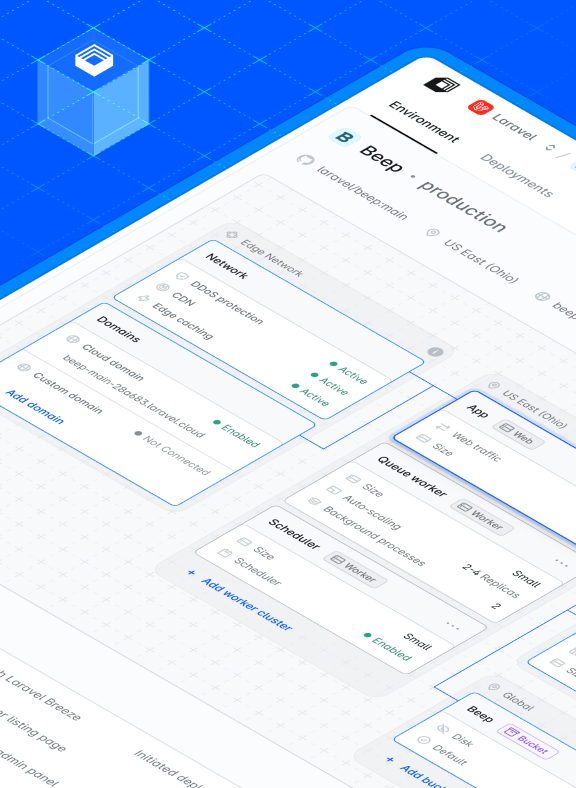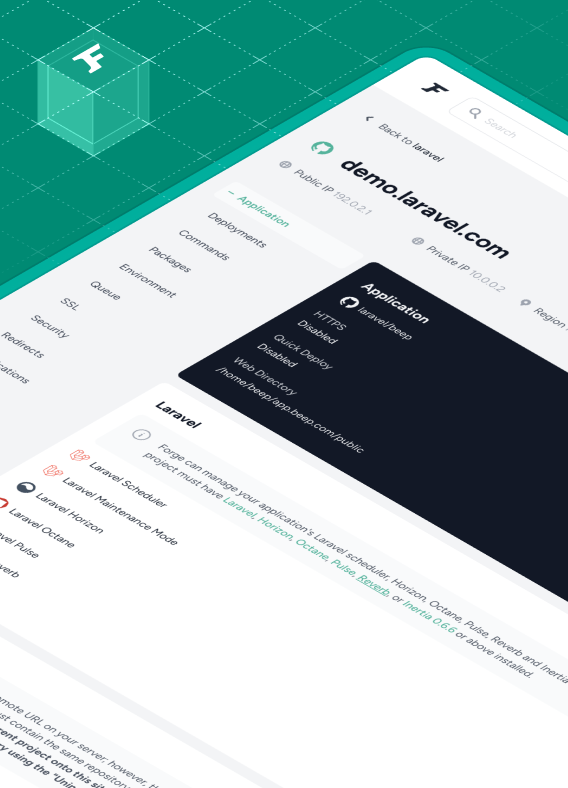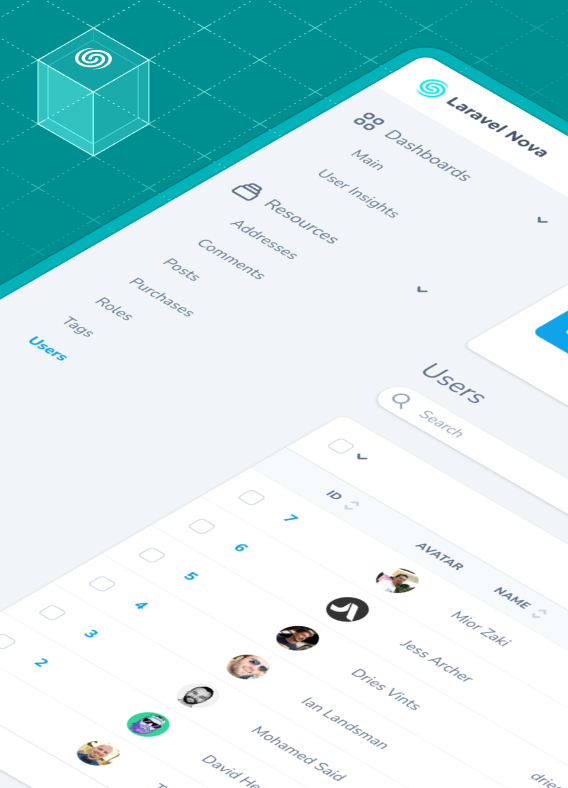The Laracon Keynote was packed!
Things you can do right now:
- Try Preview Environments on Laravel Cloud.
- Use production-ready MySQL with backups and restore on Laravel Cloud.
- Sign up for the Laravel VPS waitlist.
Some highlights include: We’ve enhanced the developer experience across Laravel Cloud, announced the next generation of Forge, introduced AI-powered enhancements, improved tooling in Laravel 12, and launched refined, developer-first pricing for Laravel Nightwatch observability.
A lot of Coke Zero-fueled work and thought went into every update to simplify workflows, eliminate friction, and boost reliability for all you Web Artisans out there. Let’s dig deeper into the announcements:
Laravel Cloud
MySQL Support is GA
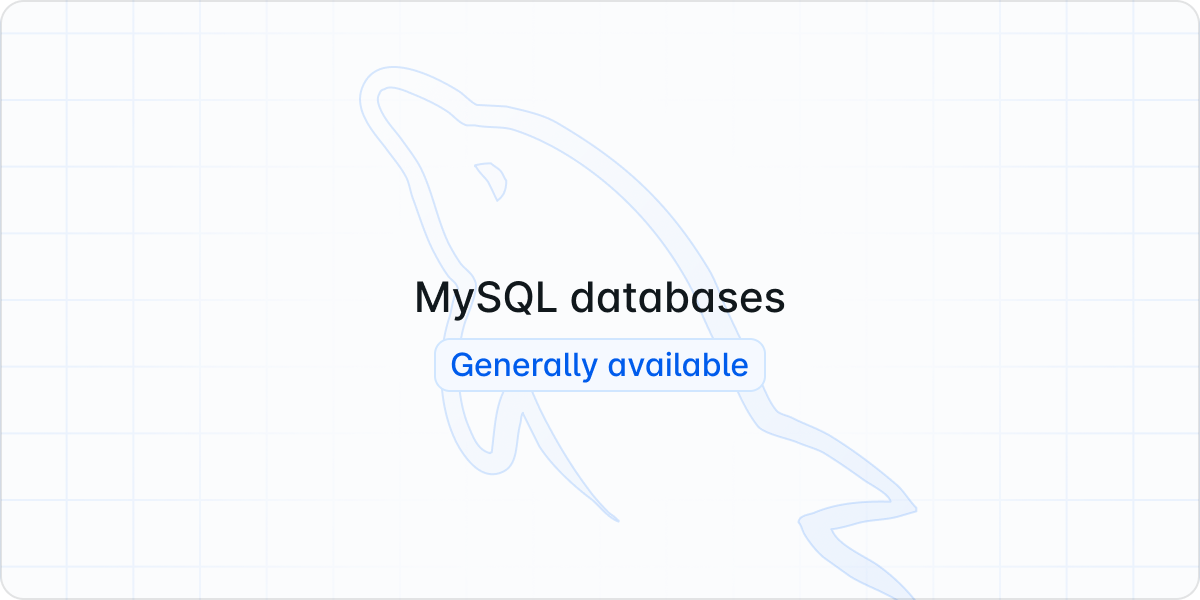
If you’ve been waiting for the “developer preview” label on Laravel Cloud’s MySQL offering to disappear before adopting, today’s the day!
With the Laravel Cloud MySQL service generally available, you get fully hosted, production-ready MySQL with sizing options ranging from 1 CPU/512 MB RAM all the way up to 16 CPU/64 GB RAM, and storage options from 5 GB to 1 TB.
Each instance includes daily automated backups with a customizable retention window (up to 30 days or more, for Enterprise customers). This is ideal for most production workloads.
Also coming soon:
- Support for larger compute and storage sizes
- Read replicas for scaling read-heavy applications
- High-availability clusters with automatic failover
- Point-in-time recovery for better data protection
This release moves Laravel Cloud one step closer to being a true all-in-one deployment platform.
Simplified Pricing + New Plan Names (coming August 12)

We’re updating Laravel Cloud’s pricing to be more flexible and more predictable. This includes lower compute costs and more bandwidth included by default.
We’re also updating the plan names:
- The new Starter (formerly Sandbox) plan will have no subscription fee and will support custom domains, with hibernation enabled by default and resource size caps to minimize costs.
- Growth (formerly Production) plans will start at $20/month and include key features like Queue clusters and Preview Environments alongside Pro Compute and Pro MySQL sizes, and enhanced security.
- Business plans will offer higher performance tiers and advanced networking, ideal for teams managing high-compliance workloads or more complex, organization-wide infrastructure.
Smarter Autoscaling for Queues: Available in Developer Preview
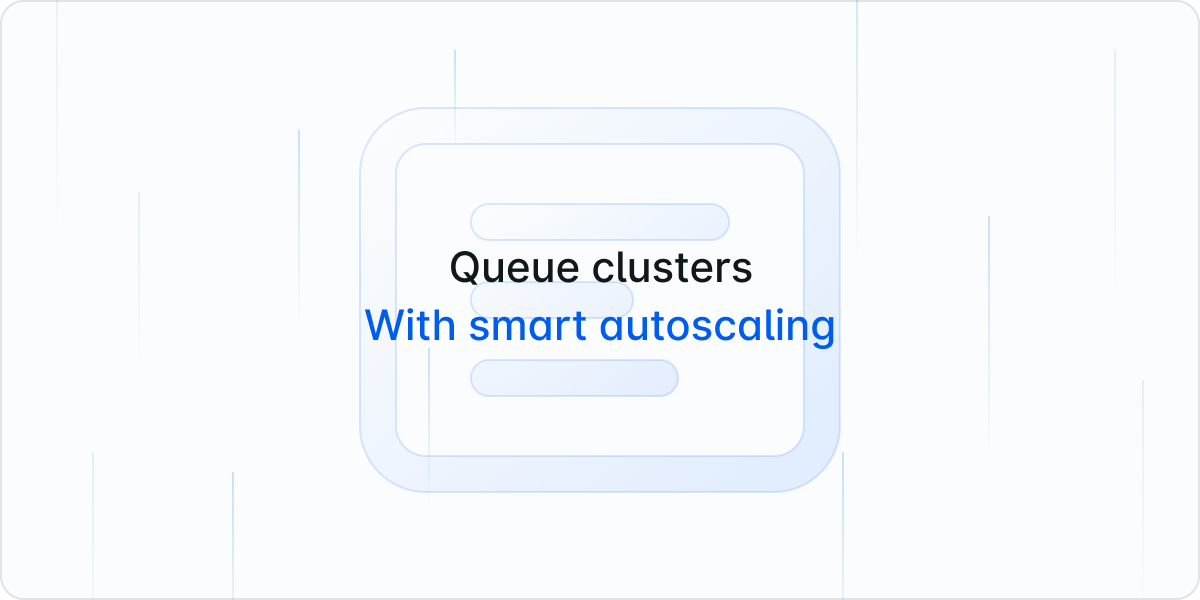
Laravel Cloud now supports a third cluster type (in addition to App and Worker clusters) built specifically for queue workloads. Launching in developer preview, the new Queue cluster is a fully managed option that monitors and autoscales your Laravel queue processes and replicas based on real-time metrics.
This solves a long-standing issue: most developers have had to guess how many queue worker processes to run. Too few, and your jobs get backed up and you underutilize your compute capacity.. Too many, and you risk server slowdowns or crashes.
Queue clusters eliminate the guesswork. They track each queue worker’s CPU and RAM usage as well as overall job throughput and the size of the backlog of pending jobs, then adjust the number of workers and replicas accordingly. The goal is to maximize available resources while staying safely below the upper limits.
Autoscaling is driven by queue latency. When jobs sit too long in the queue (based on a latency threshold you define), Laravel Cloud adds more worker processes and, if needed, more replicas to your cluster. Once the backlog clears and latency drops, the cluster scales back down to reduce costs. It's efficient, fast, and built for Laravel.
Test Every PR in Production-Like Preview Environments: Available Now
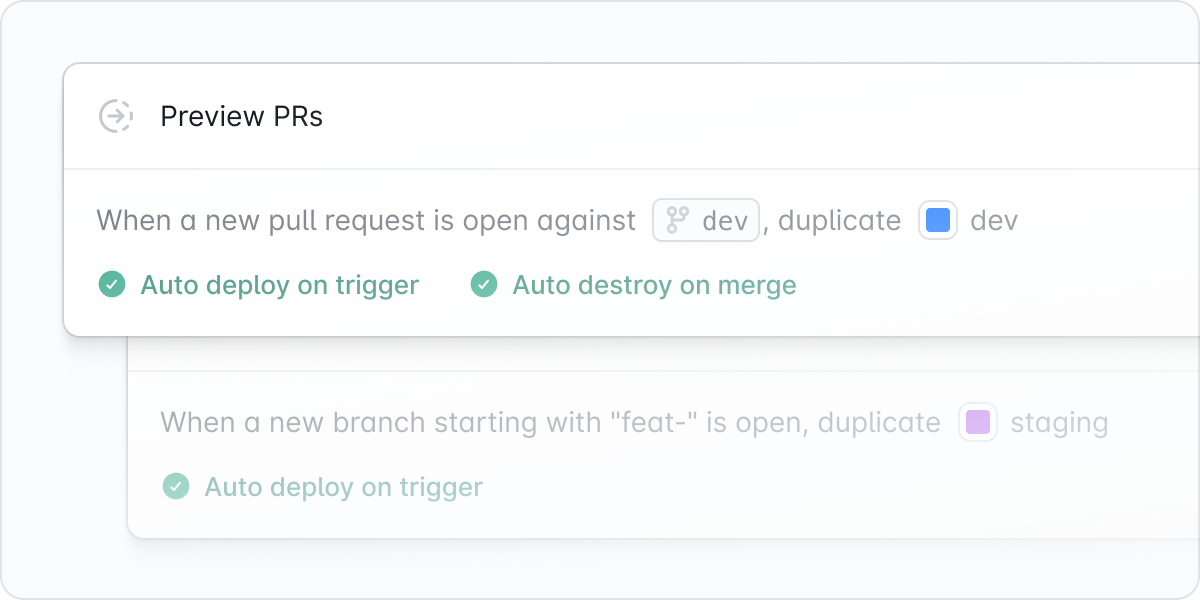
Laravel Cloud now includes Preview Environments with Growth, Business, and Enterprise plans. These on-demand, fully isolated environments spin up automatically for every pull request, letting you test features, migrations, and integrations before they hit production.
It’s a fast, reliable way to catch bugs early, collaborate with stakeholders, and ship with more confidence. If you're building in public, working across teams, or demoing features for clients, this is the kind of infrastructure that will make your life easier.
Each preview mirrors your app in a production-like setting. You can use shared or dedicated databases and other resources. Preview environments can be configured to auto-delete when PRs are closed or merged, so you only pay for environments you’re actively working on. Filtering lets you limit previews to specific branches or PRs, and you can run custom deploy steps like migrations or seeders.
Launch Production-Ready Apps with Starter Kits: Available Now
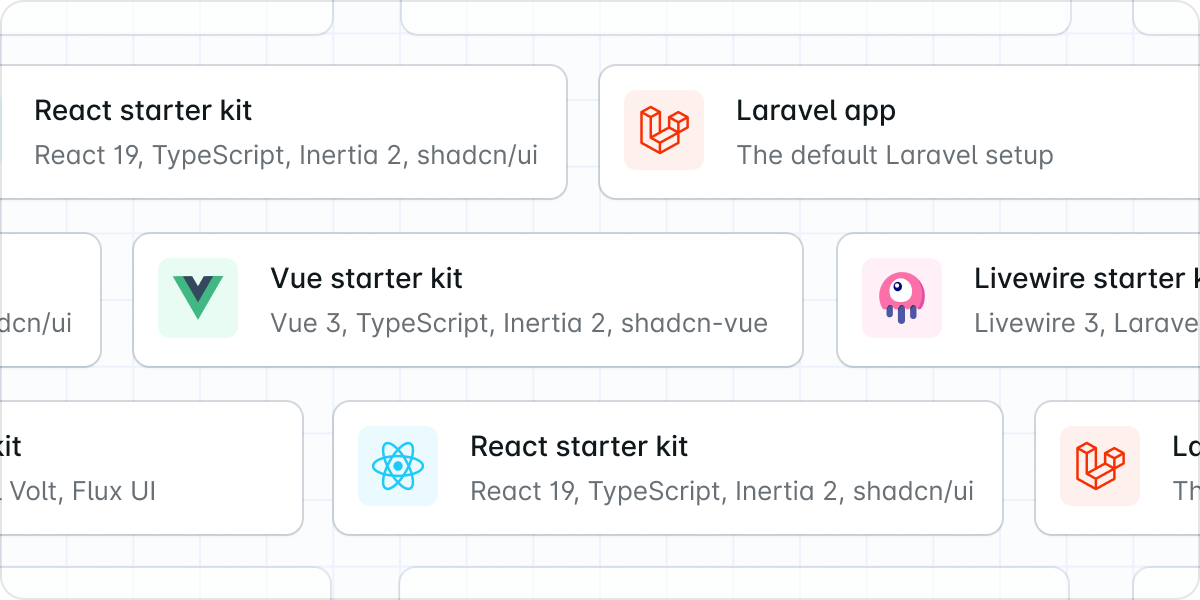
Laravel Cloud now supports instant production-ready app creation from official Laravel Starter Kits. This will enable you to go from template selection to a live Laravel application in minutes, with no existing repositories required. Choose a stack (production-ready templates are available for Laravel, Livewire, React, or Vue), select a region, and deploy in under five minutes.
We’ll handle the repository creation, deployment, and configuration. You can customize the repo name and visibility, then jump straight into development, leveraging Laravel Cloud’s infrastructure and deployment pipeline. All templates are production-ready and pulled directly from Laravel’s official GitHub.
And more
Watch out for WebSockets clusters coming soon. This will enable you to run Laravel Reverb on Cloud with our new cluster to power your real-time applications.
Laravel Forge: Next-Level Server Management Coming Soon
We’re reimagining Forge for the modern era to make it the fastest, most reliable, and easiest server management platform for developers. This next generation will dramatically cut setup times, automate and enhance your app’s security, and simplify operations. By streamlining the platform and the developer experience, we’re creating a solid foundation to continue building on. Stay tuned, this is just the start.
To keep up to date with the new releases, join our waitlist and get the news delivered directly to your inbox.
Forge’s Evolution
We’re overhauling the platform with a redesigned UI built on TypeScript, Inertia.js, and Vue, powerful new features, and tighter Laravel ecosystem integration. The goal is to deliver faster workflows, more control, and a developer experience as polished as the apps you deploy.
Here’s what you can expect from next-generation Forge:
Deployment and Infrastructure
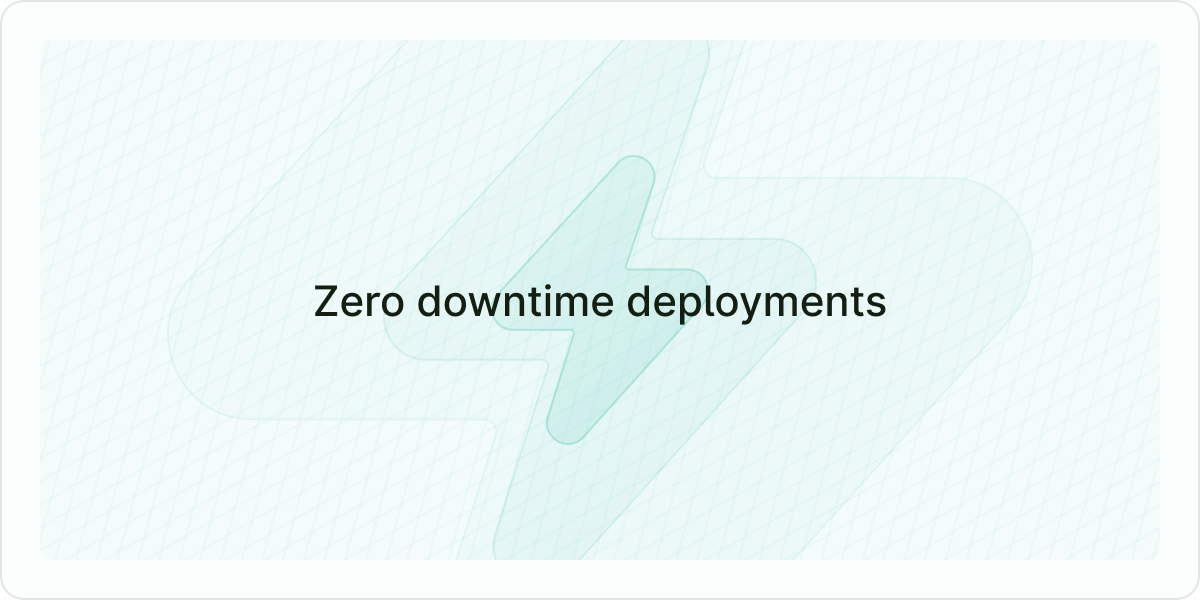
- Zero-downtime deployments now ship out of the box, so teams can move fast without risking service interruptions.
- Laravel VPS cuts server provisioning time from minutes to seconds with a single click.
- Stacked and queued deployments, a much-requested feature at Laracon EU, help you visualize which commits were deployed and in what order. Subsequent deployments won’t register commits that didn’t make it into production, reducing confusion and deployment drift.
- Hosted
on-forge.comdomains: No more sharing IP addresses or having to set up DNS before you can show someone what you’re working on. Just deploy your application, and you instantly have a shareable URL. - Nuxt and Next.js support streamlines the installation and deployment of these frameworks in both server-rendered and static-site modes.
- Healthchecks automatically ping your app from three global regions (London, New York, and Singapore) post-deployment to verify it’s live and reachable.
- Heartbeats help monitor scheduled jobs by pinging Forge on completion. If a job is delayed, you’ll be notified.
Please join the waitlist for Laravel VPS if you’d like to help test ahead of GA or just be notified when we GA.
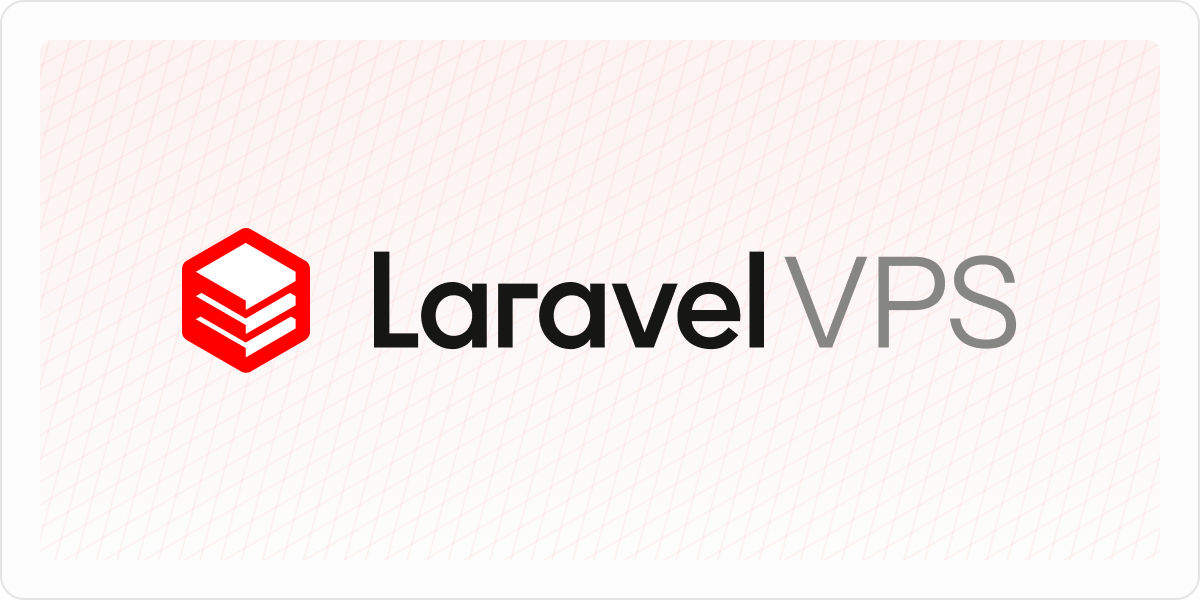
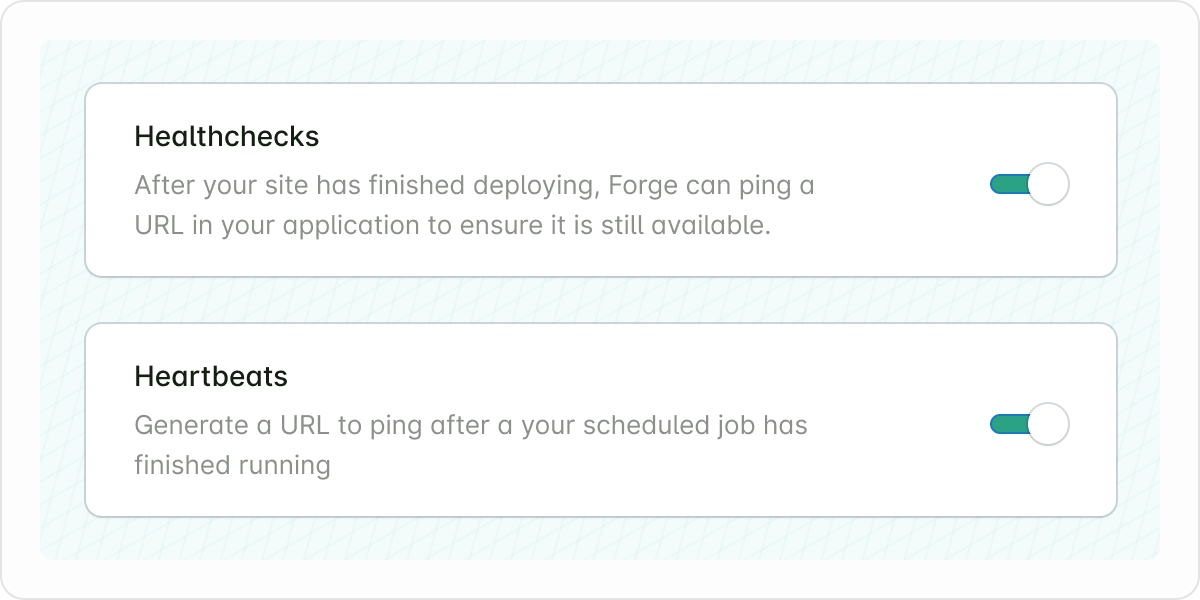
Developer Experience
- Integrated terminal with SSH collaboration, allowing real-time shared terminal sessions within your org.
- A feature-rich and intuitive command palette, making it easy to search, navigate, and take actions across your servers and sites without reaching for the mouse.
- Improved SSL and domain management automate certificate renewals and simplify setup, so you can scale without dealing with manual cert or DNS hassles.
- Named scheduled jobs, so you can finally keep track of what’s what.
- New metrics charts give you real-time insight into CPU, memory, and bandwidth usage, helping you catch issues before they escalate.
- New notification center to help you stay on top of system events and changes.
- Streamlined UI (dark mode included) for a cleaner, faster, and more intuitive interface across the board.

Collaboration & Access Control
- Role-based access for better team management. Business plans can define custom roles for even more control.
- Orgs as billable entities, so teams can sign up for Forge multiple times. Ideal for agencies, freelancers, or anyone managing projects across different clients or teams.
API
- New Forge API: a modern API that’s built to be performant. It’s paginated, it’s JSON:API spec compliant and has new documentation to go with it.
Laravel 12
Laravel 12 enhances the developer experience by introducing Laravel’s first official AI-related packages, alongside improvements to client-side tooling. These updates reduce boilerplate, accelerate feedback loops, and keep your code clean and connected.
Laravel Boost & MCP SDK (Coming Soon)
- Laravel Boost is an AI-powered dev assistant complete with versioned docs and Laravel-curated AI rules.
- Boost is powered by the model context protocol software development kit (MCP SDK for short). This SDK makes setting up an MCP server in your Laravel app effortless, paving the way for AI-driven features.
These are first-party packages maintained by the Laravel team and a step-change in how Laravel embraces AI.
Broadcasting Made Easier
- Enhanced
install:broadcastingcommand streamlines setup. - New useEcho hooks let you manage real-time subscriptions in React or Vue with minimal code.
import { useStream } from "@laravel/stream-react";
function App() {
const { data, isFetching, isStreaming, send } = useStream("chat");
const sendMessage = () => {
send({
message: `Current timestamp: ${Date.now()}`,
});
};
return (
<div>
<div>{data}</div>
{isFetching && <div>Connecting...</div>}
{isStreaming && <div>Generating...</div>}
<button onClick={sendMessage}>Send Message</button>
</div>
);
}
Streaming Efficiency
- The new useStream hooks simplify receiving streaming data from your Laravel backend and allow you to share stream connections across multiple components.
import { useStream } from "@laravel/stream-react";
function App() {
const { data, isFetching, isStreaming, send } = useStream("chat");
const sendMessage = () => {
send({
message: `Current timestamp: ${Date.now()}`,
});
};
return (
<div>
<div>{data}</div>
{isFetching && <div>Connecting...</div>}
{isStreaming && <div>Generating...</div>}
<button onClick={sendMessage}>Send Message</button>
</div>
);
}
Inertia <Form> Component (Coming Very Soon)
- A drop-in replacement for the HTML
formtag: build standard HTML forms and let Inertia intercept submissions and report form state, eliminating repetitive setup.
<script setup>
import { Form } from '@inertiajs/vue3'
</script>
<template>
<Form action="/login" method="post" v-slot="{ processing, errors }">
<input type="text" name="email">
<div v-if="errors.email">{{ errors.email }}</div>
<input type="password" name="password">
<div v-if="errors.password">{{ errors.password }}</div>
<button type="submit" :disabled="processing">Login</button>
</Form>
</template>
Wayfinder+++ (Coming Soon)
- Automatically generates client-side type definitions and JS for backend route definitions, form requests, Inertia props, enums, and more. That means fewer errors and better alignment between backend and frontend code.
Ranger (Coming Soon)
- Laravel Ranger scans your Laravel app and looks for interesting things, such as models, routes, and enums. When it finds something interesting, it prompts you to confirm your interest and then hands you a well-typed data transfer object (DTO). From there, you’re free to use it however you like. You can use Ranger to automatically generate TypeScript, API documentation, or XML based on what it finds.
Each of these features targets common pain points, from reducing boilerplate to mismatched types, making everyday Laravel development smoother and more enjoyable.
Nightwatch: Now Bigger and Brighter
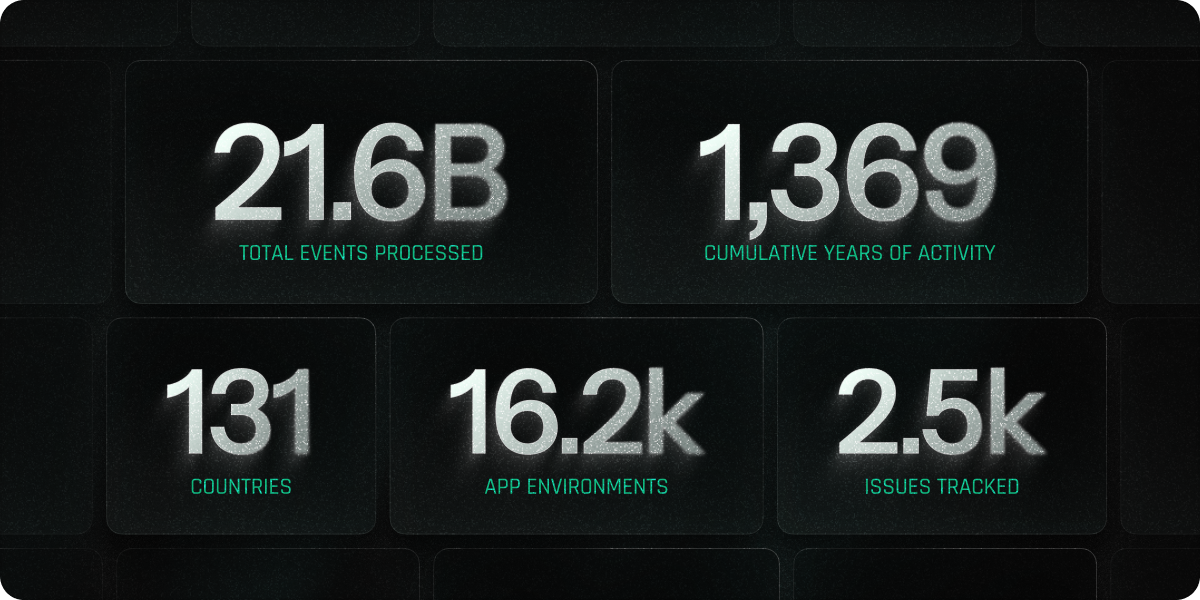
Laravel Nightwatch is the observability platform built specifically for Laravel. It unifies logs, traces, exceptions, and performance insights into a single, powerful destination. Nightwatch is designed to help you understand what’s happening in production without having to jump between tools. Where others go broad, Nightwatch goes deep.
Since launching in June, Nightwatch has processed billions of events. We’re incredibly grateful to our early users for their feedback, who have been instrumental in shaping our roadmap and directing us to ship meaningful improvements.
What’s New
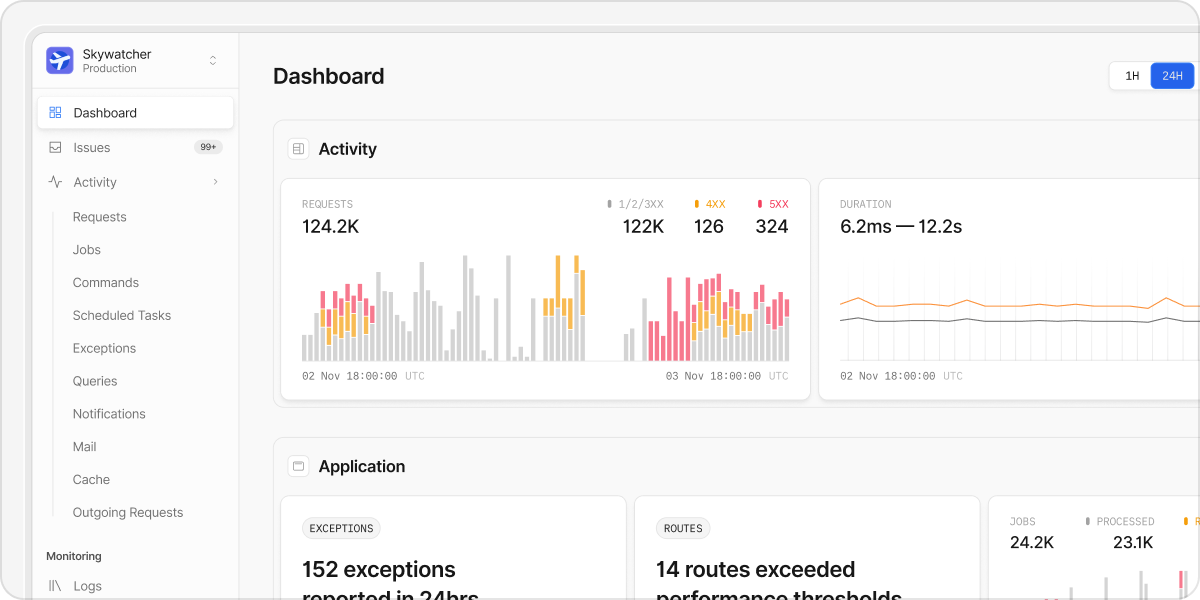
Light mode has landed along with a suite of accessibility and usability enhancements. If you prefer bright, minimal interfaces, you’ll feel right at home.
Slack integration has also arrived, giving you real-time alerts for exceptions, regressions, and performance breaches directly in your team’s workspace. You’ll also be notified when new issues occur, are reopened, resolved, or commented on by teammates.
Updated Pricing
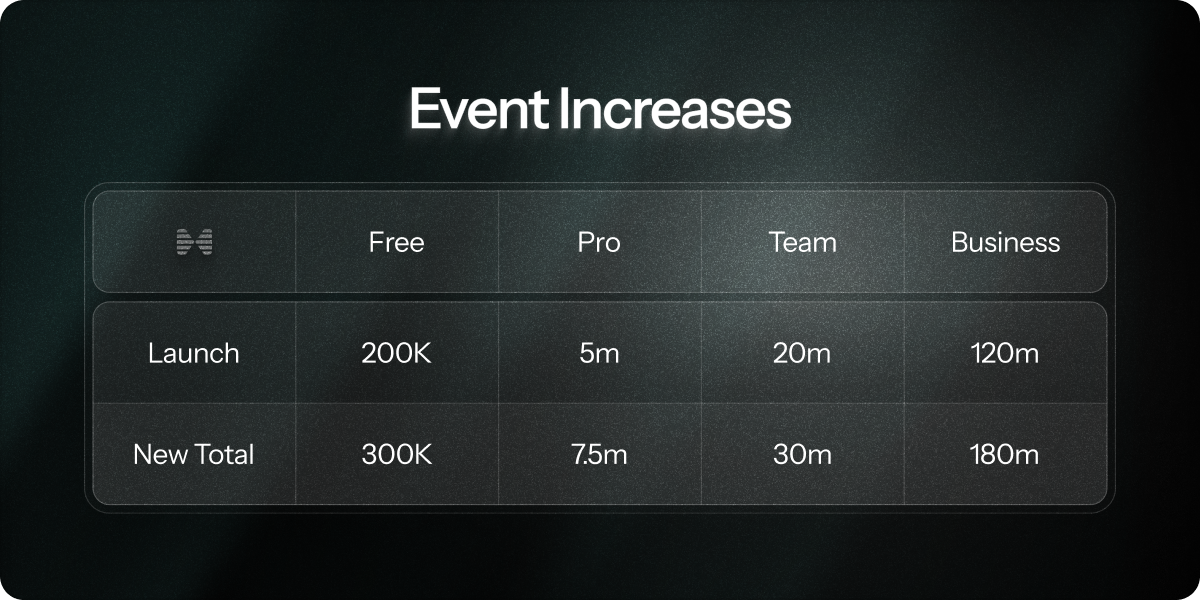
We’ve made pricing changes to support teams as they grow:
- 50% more events included in every plan, including our free tier, so you can explore more of your app.
- Lower costs for additional events, so you can do even more without limits.
- Volume-based pricing (coming soon) to make large-scale adoption more cost-effective: the more you send, the less you pay per event.
These updates make Laravel-native observability more accessible than ever, and we’re just getting started.
And that’s a wrap for our 2025 Laracon US announcements! Follow us on X or subscribe to our YouTube channel for more news and deep dives into what we shipped.


